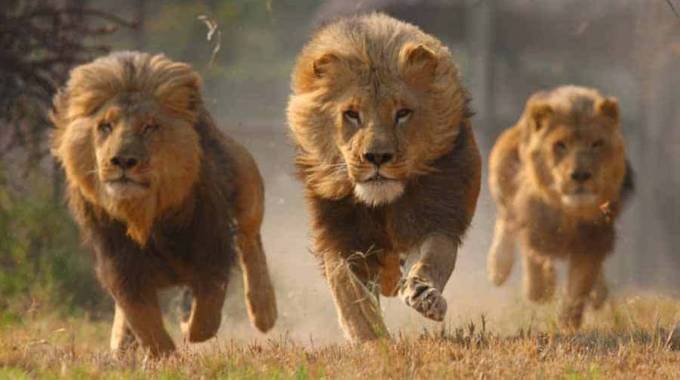
The Sunday Mail

Tinashe Farawo
ZIMBABWE is one of the few lion-populated countries in the world with a robust and contemporary African Lion Management Plan.
This has resulted in its lion population being listed on Appendix II of the Convention on International Trade in Endangered Species of wild Fauna and Flora (CITES).
Zimbabwe’s lions can be traded internationally on a commercial basis using a permit system to ensure the trade is not detrimental to the survival of the species around the world.
One of the lion strongholds or most inhabited areas in Zimbabwe is Hwange National Park and adjacent areas, northwest of the country.
This area has a healthy and stable lion population estimated to be around 500. The lion population has been established through robust spoor and camera trap surveys.
Zimbabwe subscribes to the principle of sustainable utilisation of wildlife.
This is largely achieved through the allocation of harvesting quotas for hunting, live sales and management purposes.
Quota setting workshops are conducted by the Terrestrial Ecology Unit under the Scientific Services Division of the Zimbabwe Parks and Wildlife Management Authority (ZimParks) through a participatory process where field researchers at property level (Park Estates, private farms, forestry land, conservancy and Rural District Council) and landowners make presentations about their properties. These presentations include information on wildlife population estimates, security status of the property, poaching levels, diseases, translocations and general management practices.
All these processes arrive at sustainable off take levels for the lion population.
Discussions and critiques from the workshops are important in increasing transparency, learning from practitioners and allowing for objective quota allocation.
The entire process allows for sustainable utilisation without compromising the biological proliferation of the species.
Further, the setting of a sustainable quota is adaptive taking into account such lion population factors, trend patterns and socio-ecological processes.
The country has well-regulated quotas and policies that are compatible with large carnivore conservation. The hunting of lions in Zimbabwe is based on an adaptive age-based system, since 2013. A panel of experts, including representatives from ZimParks and other interested stakeholders participate in the trophy aging workshops. It is recommended that to harvest old lions for trophies, the minimum age for a huntable male lion is six years.
Research on population dynamics including sex-age structure habitation and ecological preference is critical in determining adaptive management priorities. All harvested lions will have their ages confirmed to determine adherence to the set system with those who violate the system penalised accordingly.
It is important to note that Zimbabwe has a reputable history of harvesting its wildlife sustainably and this has resulted in stable and increasing populations of wildlife. Areas adjacent to Hwange National Park and other key wildlife areas around the country are having challenges in terms of competing for resources. This is especially due to activities related to consumptive and non-consumptive uses.
In the last five to 10 years there have been growing calls against hunting, especially of lions in these areas which are prime spots for non-consumptive/photographic tourism. The same areas are excellent trophy hunting grounds. Both consumptive and non-consumptive users are beneficiaries of wildlife spilling over from the park.
In this context, the conflict is emanating from sharing common resources since lions have large home ranges that straddle across boundaries of several private and state land. The conflict is reinforced by divergent values of the two groups of users of wildlife where non-consumptive users are in general for anti-hunting and anti-wildlife trade. There is no doubt that hunting is an economic engine for sustainable conservation and it helps in the much needed socio-economic development of rural communities.
All decisions by ZimParks are science-based in contrast to critics of hunting who want to offer untested methods in wildlife management. The wildlife population in the country is generally healthy and this is a result of good management processes since the first park was created in 1928 to the present day management under the leadership of Zimparks director Dr Fulton Mangwanya.
Over the years the country has witnessed the mushrooming of Western sponsored NGOs who in most cases raise money in the name of wildlife management for their personal benefit. In 2016, a lion called Cecil was hunted and it generated a lot of publicity on account of false information. It is important to note that the Cecil hunt was legal, so was the recent lion hunt in Hwange.
It is widely known that Zimbabwe contributes to the sustainable use of its wildlife through both consumptive and non-consumptive use of its natural resources. It’s a fact that Zimbabwe’s tourism is driven by the same principle.
Hunting plays a critical role in the development of the country and is one of the mainstay economic activities that generate on average US$ 2, 1 million every year in the CAMPFIRE (Communal Areas Management Programme for Indigenous Resources) projects in 58 districts in the country, benefiting up to one million people.
Thus, banning hunting without provision of alternative modes of conservation financing will have severe negative impacts on community livelihoods, rural development and general wildlife management.



